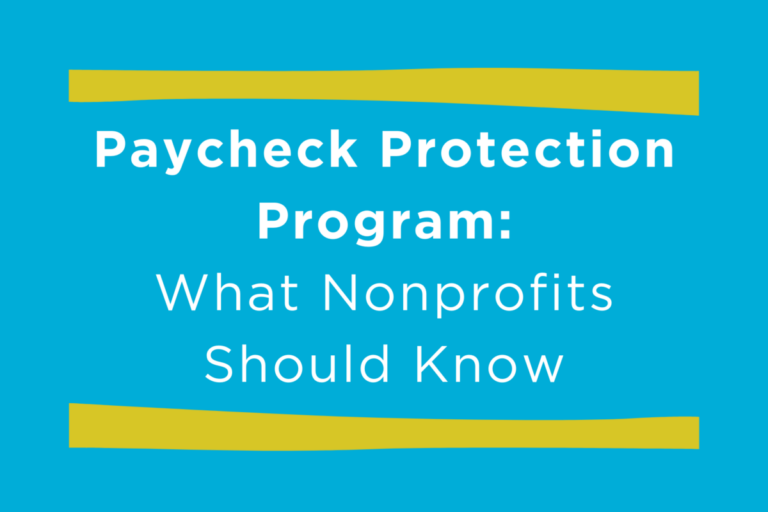Paycheck Protection Program: What Nonprofits Should Know

On Tuesday, March 31, the Small Business Administration (SBA) announced its new Paycheck Protection Program (PPP). Nonprofits with less than 500 employees are eligible for – and should take advantage of – this forgivable loan program. If the COVID-19 pandemic has caused economic damage for your organization, we encourage you to apply if you feel it would help you pay your employees.
April 3 Update: Banks are working quickly to incorporate the final regulations from the SBA before they start accepting applications. To keep apprised of the latest rules with the Paycheck Protection Program, go to www.sunrisebanks.com or www.sba.gov.
A quick overview of the Paycheck Protection Program, from the SBA:
- It’s designed to provide a direct incentive for small businesses and nonprofits to keep their workers on the payroll.
- SBA will forgive the amount of the loan that is used to pay employees and eligible expenses during the 8 weeks after the loan is made. You can bring employees back from furlough, layoff, or reduction in hours or pay from this program.
- Loans will be fully forgiven if the funds are used for payroll costs, interest on mortgages, rent, and utilities (due to likely high subscription, at least 75% of the forgiven amount must have been used for payroll). Loan payments will also be deferred for six months. No collateral or personal guarantees are required. Neither the SBA nor banks will charge small businesses or nonprofits any fees.
Start with these five steps:
- Read the program information about the purpose, eligibility, and guidelines for the PPP.
- Contact your bank to inquire about the PPP and get on their queue for the application. Applications will open as soon as this Friday, April 3, and the program will be available through June 30, 2020.
- Read the Application Form.
- Gather the information and documents needed to be ready to apply:
- 2019 payroll records: Your last 12 months of payroll
- Healthcare cost records: All health insurance premiums paid by your nonprofit under a group health plan.
- Retirement documentation: Your nonprofit’s retirement plan funding paid for by the company.
- Other allowable expenses: Information on amounts paid for rent, interest on a mortgage, and utilities for the last 12 months.
- Recorded 20-minute webinar (April 3) and Toolkit from FMA with a PPP calculator, list of SBA lenders, script for talking with your lender, and a board resolution template. Make sure your board is on board. While it’s in your interest to apply quickly, do be sure to check in.
Note: Yes, this program is through the Small Business Administration, but this is not a typical SBA loan application, so do not be deterred by this. This program is designed to be as streamlined as possible to ensure nonprofits and small businesses can retain or quickly rehire employees.
Propel Nonprofits and the Minnesota Council of Nonprofits will be hosting a webinar on the Paycheck Protection Program on April 8 at 1 pm Central Time. However, if you’re thinking about applying, do so as soon as you can.
Please know that you won’t be under the microscope as you submit the application. There’s no penalty for a “good enough” application. Everyone – nonprofits, boards, and banks – are all figuring this out. We know that the guidelines, process, and timeline will get clearer over the next few weeks.
Other CARES Act resources for nonprofits can be found on Propel’s COVID-19 resource page.

